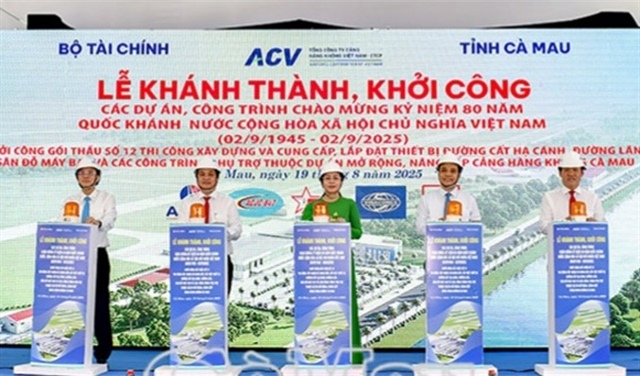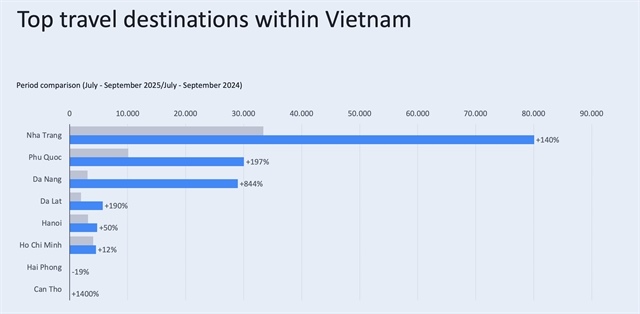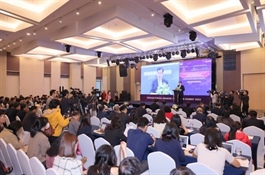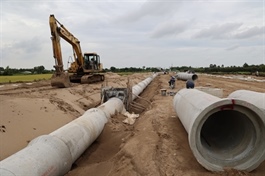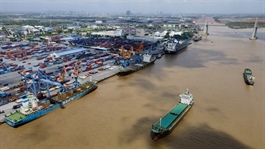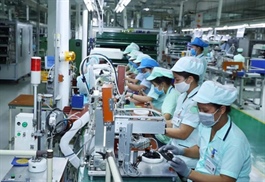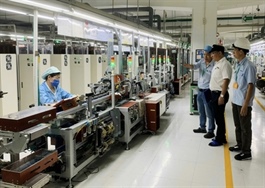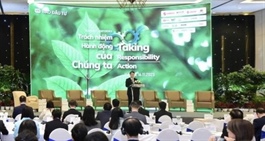China reigns as one of Vietnam's largest trading partners and investors
China reigns as one of Vietnam's largest trading partners and investors
Vietnam welcomes significant investment from China across diverse manufacturing segments, including textiles, optics, and telecommunications.

Over the last five years, China has been one of the top five investors in Vietnam. In the first nine months of 2023, it had the second-highest investment in the country at $2.92 billion, following Singapore with an investment of $3.98 billion.
According to the Ministry of Planning and Investment, in the first nine months of 2023, 102 countries and territories invested in Vietnam. China is the second-largest source, with a 14.5 per cent share, increasing by 94.9 per cent on-year. In terms of newly registered manufacturing FDI, in the first nine months of 2023, China was the leading country with a 22 per cent share. Singapore followed with a 21 per cent.
China remains Vietnam’s largest trading partner, with a 24.6 per cent share of the country’s total trade turnover by the end of September 2023. In 2022, the import and export value between China and Vietnam was $175.6 billion. This year it reached $138.9 billion so far.
Vietnam has been fighting its way up the value chain for years. Events like the US-China trade war in 2018 and the pandemic in 2020 and 2021 have sped up the diversification and relocation of multinational electronic manufacturers outside of China to Southeast Asia.
Some of the largest China manufacturing projects to invest in Vietnam in 2023 are $500-million from Shandong HaoHua Tyre in Binh Phuoc province; $140-million from Hainan Longi Green Energy in Bac Giang province; $55-million from Xiamen Sunrise Group in Quang Ninh province; $42-million from Nice Elite International in Thanh Hoa province and $40-million from Taizhou Huali New Materials in Thai Nguyen province.
Increasing demand from solar manufacturers
Solar product manufacturing is on the rise in Vietnam, particularly in northern provinces. Recently, Trina Solar, one of the largest solar panel producers by sales globally, invested in its third factory in Vietnam in Thai Nguyen. The planned new factory is expected to see an investment of $420 million. Top Chinese solar companies have been expanding production in Vietnam in recent years, not only to tap into the Southeast Asian market but to use it as a springboard to enter European and the US markets with greater ease.
“Firstly, Vietnam shares a border with China, facilitating convenient transportation of goods, raw materials, and production lines. Moreover, the northern region of Vietnam offers geographic proximity to China and competitive industrial land prices compared to the southern region. Vietnam's high level of economic integration is noteworthy," John Campbell, associate director, head of Industrial Services at Savills Vietnam said at the event “Vietnam’s Industrial Transformation in the post-pandemic era” hosted in Shanghai and Shenzhen by Savills Vietnam and CNCTech on November 10.
"To date, Vietnam has established economic and trade relations with around 224 partners from various countries and regions worldwide. This creates favourable opportunities for Chinese businesses in Vietnam to expand their market presence. Also, the country boasts an ample workforce, including a skilled labour force, and offers highly competitive labour costs. The government has introduced tax incentives and a clean energy strategy to draw in foreign investors," he said.
Campbell said that industrial parks nationwide had a high occupancy of over 80 per cent, with occupancy in key northern provinces reaching 83 per cent and 91 per cent in key southern provinces. Ready-built factories and warehouses also recorded high occupancy of 83 per cent across the country. Limited vacancies could challenge tenants if they do not have the right entry approach or the support of a qualified advisor.
He recommended that to engage the best companies, industrial property and ready-built developers should focus on value-added services and incentives beyond price and rents such as market entry services, human resources and legal support, management services, sustainable initiatives and working with professional industrial real estate agencies.
“The government should continue its investment in infrastructure and upskilling Vietnam’s labour force to improve productivity and efficiency. Fostering supporting industries, strengthening supply chains, simplifying investment and land use procedures, and embracing digitalisation are all key areas for Vietnam’s industrial sector,” Campbell added.


